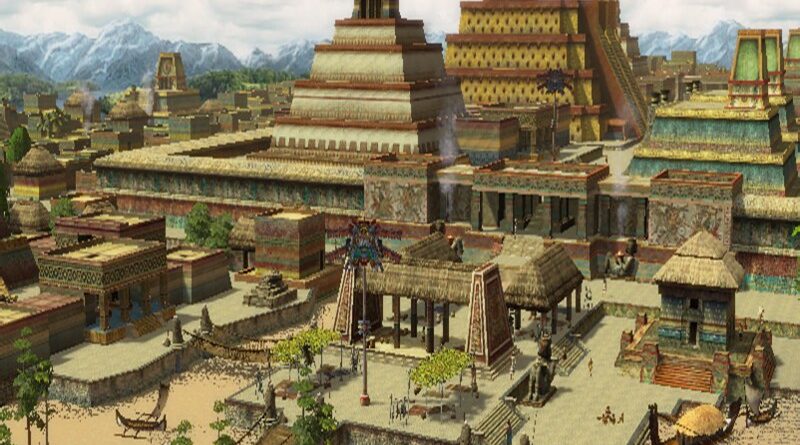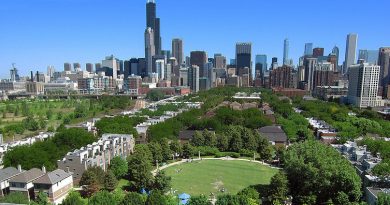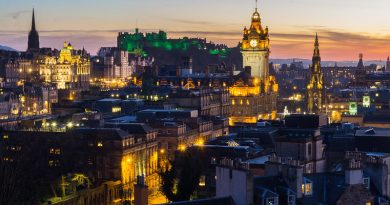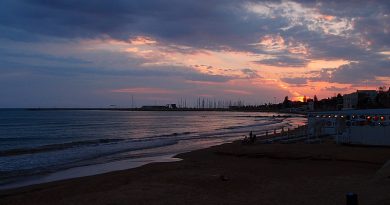Mexico: Conquistadors, Aztecs & Revolution
Mexico’s story is always extraordinary and at times barely credible, yet the jewels of Mexico have at times been overshadowed by the violence Mexico has experienced. Perhaps this isn’t that surprising considering its heritage; Mexico’s name hails from the violent Aztec civilisation who called themselves the Mexica. Mexico’s 2700 year-long tradition of intelligent and yet astoundingly bloodthirsty civilisations involving the Olmecs, Maya and Aztecs crumbled in two short years at the hands of a few hundred adventurers from Spain.
For over 250 years, El Camino Real de Tierra Adentro (The Inland Royal Road) between Mexico City and Santa Fe, New Mexico was the route of conquest, expeditions, The Silver Road, missionaries, soldiers, settlers and commerce from central Mexico to, what is today, the Southwest of the United States. In July of 2010, this road was named as a World Heritage Site.
Chihuahua and Pancho Villa
Chihuahua has always been one of the most important centres for Mexico’s long struggle for independence and revolution and in 1910 Pancho Villa made it his headquarters for the Mexican Revolution. Today Chihuahua is still Pancho Villa’s town, his statue dominates the town square, there are dozens of murals glorifying his campaigns, and there is even a brand of local tequila named Viva Villa. Villa retired from revolutionary life in 1920 but had only a short retirement for he was gunned down in his car on July 20, 1923.
It is in Quinta Luz where you really get an insight into the complex, contradictory character of a man who was transformed from the abandoned child of a penniless peon to a ruthless mountain bandit into a romantic hero of the revolution! Mexicans of Quinta Luz today are fiercely proud of their hero and there is an annual ride of Pancho Villa supporters known as ‘Villistas’ from Chihuahua into New Mexico.
Although Mexico has been a producer and transit route for illegal drugs for generations, the country now finds itself in a pitched battle with powerful and well-financed drug cartels.
In January 2012, the Mexican government reported that 47,515 people had been killed in drug-related violence since President Felipe Calderón began a military assault on criminal cartels soon after taking office in late 2006. The violence has appeared to have slackened off this year, likely to be more to do with one rival group’s defeat of another, reducing competition and the bloodshed that comes with it than officials making headway. Though here in Torreón the overweight, corrupt and inefficient police force has recently seen something of a make-over.
The Mexican Independence Trail
Dolores Hidalgo, San Miguel & Guanajuato:
Known as the cradle of Mexican Independence, even today the presence of Father Hidalgo permeates the town, from the thriving ceramics industry that he championed to the ubiquitous statues and plaques commemorating his leading role in the independence movement.
Even without military training, Hidalgo quickly became the moral and political leader of the Independence movement in Mexico. Along with the help of men like Ignacio Allende and Juan de Aldama, they took control of a large part of western central Mexico & came close to taking the capital itself.
San Miguel de Allende shared with Hidalgo an increasing dislike of incompetent, corrupt Spanish rule, and the two often met, clandestinely, in various Guanajuato communities in the months before the independence uprising. With Hidalgo’s initial support, Allende was named commander of the anti-Spanish forces. But when the Spaniards learned of the independence conspiracy, Hidalgo decided to act first. Snatching military leadership from Allende, Hidalgo and his ragtag hordes quickly took charge of the rebellion.
The now bitter rivalry secured their fate. By mid-1811, both men had been captured, executed and their heads hung from the corners of the outer walls of the Guanajuato granary for a decade until Mexico finally gained independence in 1821.
Zacatecas: Silver Mine
The Spanish Empire was one of the first global empires and comprised of territories and colonies in Europe, America, Africa, Asia and Oceania. But it was the Spanish rule in Latin America that really held the key to its success and longevity.
After opening the silver mines in Zacatecas, Mexico and Potosi, Bolivia the empire became truly legendary. During the 16th Century Spain held the equivalent of over US$1.5 trillion in gold & silver received from what was then called ‘New Spain’. Zacatecas, producing one-fifth of all of the colony’s silver, became the third largest city in Mexico. The silver trade brought the promise of great wealth and everything that follows in its wake–urban centres, farming, commerce, craftsmen, and the livestock herds that began the modern-day ranches, which fill northern Mexico.
Zacatecas was founded in 1546, following the discovery of the very rich San Bernabé silver lode. The silver mining activities were so extensive that by 1550 there were 34 mines in operation. In 1588 the Spanish Crown granted Zacatecas the title of city and a coat-of-arms. The discovery of the Guanajuato lode shortly afterwards led to the construction of the Silver Road to link the two centres to the capital of the colony, Mexico City.
Guanajuato: The Mummy Museum
A visit to the eerie Mummy Museum will bring you face to face with corpses mummified by accident due to perfect mummification conditions in the crypts when they were buried in the 1800s. They were originally naturally mummified bodies interred during a cholera outbreak around Guanajuato, Mexico in 1833.
The mummies were discovered late in the 1800s, when the government imposed a burial tax, which many poor families were unable to pay (or to those who had no remaining family in the city), leading to the corpses being dug out. After cemetery workers began charging people a few pesos to enter the building where bones and mummies were stored the place was turned into a museum builtspecifically for them.
The museum includes anything from babies to adults to older people, men and women of all shapes and sizes, including a pregnant mummy and her 7 month old mummy foetus.
Tula: Toltec Civilisation
Tula is considered the likely candidate for Tollan, the legendary capital of the Toltec Empire, founded about AD 750, as the Teotihuacan Empire was crumbling.
The Toltec Civilization was one of three great empires of the Basin of Mexico, after the fall of Teotihuacan and before the rise of the Aztecs.
The capital was at Tula, and during the Toltec heyday (about AD 900-1200), Tula controlled most of central Mexico, the Yucatan peninsula, the Gulf coast, and perhaps even Chiapas and the Pacific coast as well.
Rather unusually for Mexico, the Toltec were a peaceful civilisation, but in 1300AD they were conquered by the bloodthirsty Aztecs.
Surprisingly, the Aztecs adopted the Toltec’s deity, the peaceful Quezalcoatl, as their secondary god, under their god of war. In contrast to the human sacrifices the Aztec god demanded, Quetzalcoatl was a peaceful god who would not tolerate talk of human sacrifices and would accept only flower and butterflies on altars.
It was the assimilation of this god into Aztec life that was to become the eventual ruin of the Aztec Empire, for Quetzalcoatl was described as a tall bearded man with white skin who wore a robe and always came in peace!
Mexico City: Tenochtitlan & Aztecs
 Tenochtitlan was the capital of the Aztec empire, built on an island in Lake Texcoco in what is now central Mexico – under modern day Mexico City. The Templo Mayor had been considered the centre of the Universe by the Aztecs, the great warrior tribe that had fought its way to the top of Mexican domination in the 15th century.
Tenochtitlan was the capital of the Aztec empire, built on an island in Lake Texcoco in what is now central Mexico – under modern day Mexico City. The Templo Mayor had been considered the centre of the Universe by the Aztecs, the great warrior tribe that had fought its way to the top of Mexican domination in the 15th century.
They were a civilisation held together by war and human sacrifice. An estimated 20,000 people were sacrificed each year, nearly 2 million people over the 92 years of rule. In fact, when the Spanish arrived, the priests with Cortes were properly horrified about human sacrifices, despite the Vatican was still in the process of Inquisitions that tortured and murdered millions in Europe, which included anyone who did not accept Jesus as their saviour.
The Aztecs’ own chief god was Huitzilopochtli, the sun god and the god of war. In fact, the Aztecs called themselves the “people of the sun.” The Aztecs saw the sun as a warrior who fought each night against the forces of darkness. In Aztec belief, the survival of the universe depended upon the sun winning these battles. And the way to keep the sun strong was to offer him nourishment in the form of blood. For this reason, most Aztec rituals included some form of blood sacrifice.
The richest form of sacrifice, however, was that of humans. The Aztecs particularly valued the sacrifice of warriors captured in battle, because they believed that the blood of strong warriors was especially nourishing. The Aztecs also made sacrifices to other gods. They threw the sacrificial victims of the fire god into a great blaze. To honour the goddess of corn, they cut off women’s heads! Overall, the Aztecs practiced human sacrifice on a much larger scale than any other Meso-american group.
Unfortunately for the Aztecs their legends had predicted the return of the winged God Quetzalcoatl from the East in 1519, so when the Spanish arrived from that very direction in that same year they were treated as returning Gods, giving the Spaniards an unfair advantage in their attempt to colonise Mexico.
In just 2 years they had subjugated the Aztecs and were setting about draining the resources of this vast and resource rich land!
Mexico City: Xocimilco Canals & Aztec life
The Aztecs of Tenochtitlán constructed an extensive network of chinampas (floating plots of land or gardens), canals and waterways that extended throughout the city. Today, all that remains of the former playground of the Aztec nobles are 114 miles of canals and gardens in the southern Xochimilco district of Mexico City. Here, the Aztec culture and language are still preserved to some extent. The city of Tenochtitlan, the capital of the Aztec empire, was a man-made island in the west side of the Texcoco Lake.
This city was connected to the mainland by causeways and canals; getting to it was done by foot or boat. The city state of Xochimilco, around 11 miles south of Tenochtitlan, was also an island city, so most of the communication between the two islands was made by boat. All the goods harvested in the Xochimilco chinampas were transported to the capital by trajineras (boats) navigating the complex canal system.
The lake, and consequently the canals, was drained by the Spaniards because after the conquest of the Aztec capital they neglected the dike system that protected the city from flooding. It was easier for them just to drain the lake.
Xochimilco: human sacrifice & peace offerings
Here in Xochimilco the remains of a three-to-four-year-old boy were found. The skull was broken and the bones had an orange/yellowish cast, a vitreous texture, and porous and compacted tissue. Aztecs have been known to boil down remains of some sacrificial victims to remove the flesh and place the skull in the tzompantli.
Archaeologists concluded that the skull was boiled and that it cracked due to the ebullition of the brain mass. Not even this town, which largely resisted Aztec rule, could completely escape the barbaric customs of this empire.
However, in the 21st century, one island in these canals has contradicted the violence preceding it. Here, among the scraggily branches and dead trees hang hundreds of old, mangled dolls. A young girl’s death here spurred an island recluse, Don Julián Santana Barrera, to offer dolls to the gods & spirits in peace. These dolls, he believed, formed vessels for spirits that kept the deceased girl company and prevented further evil from descending upon the island.
Aztec dogs
Known to exist in Mexico for more than 3,000 years, the black, hairless Xolo (show-low) can justly claim the distinction as first dog of the Americas. Named after the Aztec god Xolotl, the dog-headed god of lightning and death, the Aztecs believed the Xolo’s mission was to accompany dead people on their journey to the afterworld.
Palacio Nacion
Today the National Palace houses the office of Mexico’s President and it is a majestic symbol that sums up the whole of Mexico’s history.
The building itself was erected by Cortes in 1521 and served as the home to the Spanish viceroys for many years, but it also houses the bell that was rung to begin the War of Mexican Independence in 1810.
There is also a mural painted by the great Mexican painter Diego Riviera that serves as a timeline of Mexico’s past, beginning with indigenous life long before the arrival of the Spaniards. And in fact, in this very spot once stood the palace of Aztec emperor Montezuma II, until it was razed to the ground by Cortes, much like the rest of the Aztec Empire.




